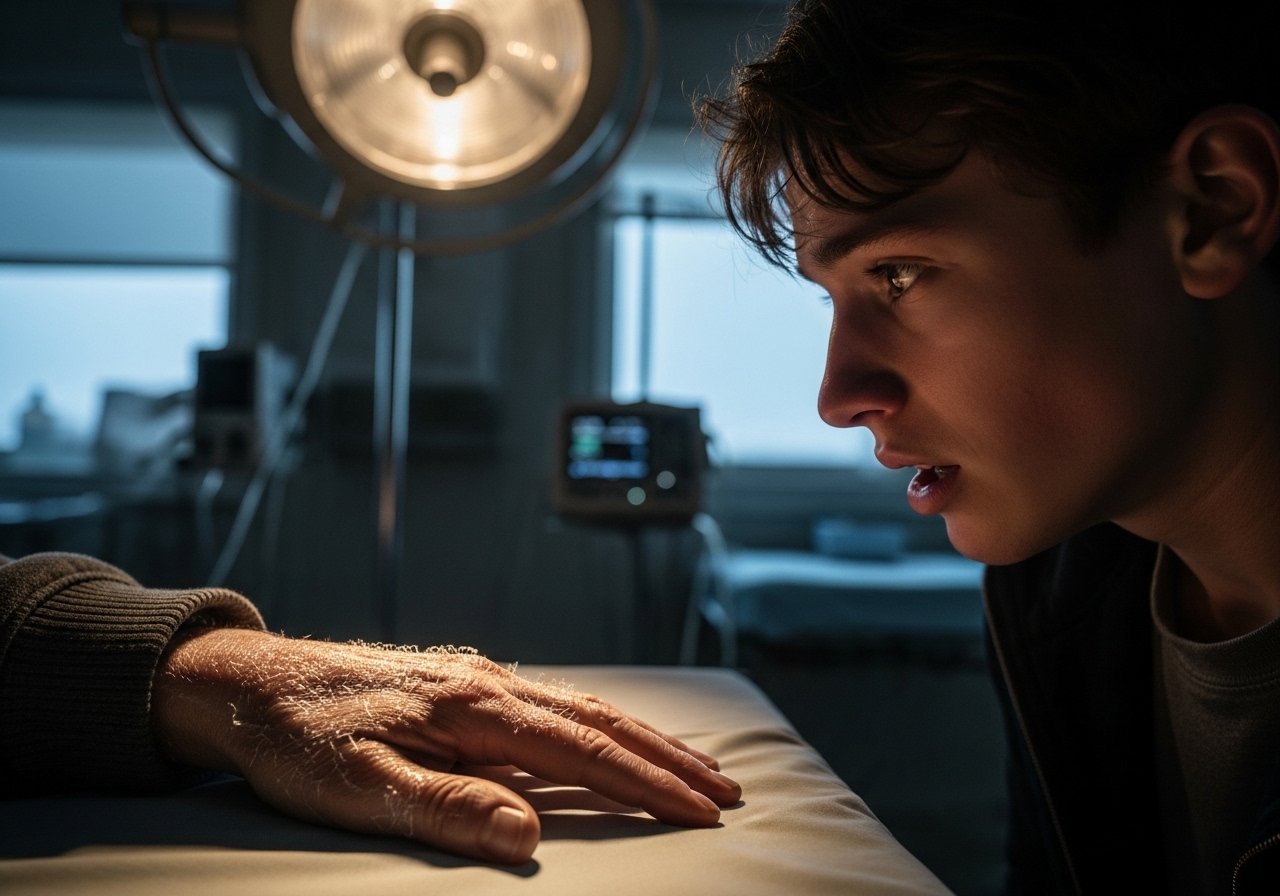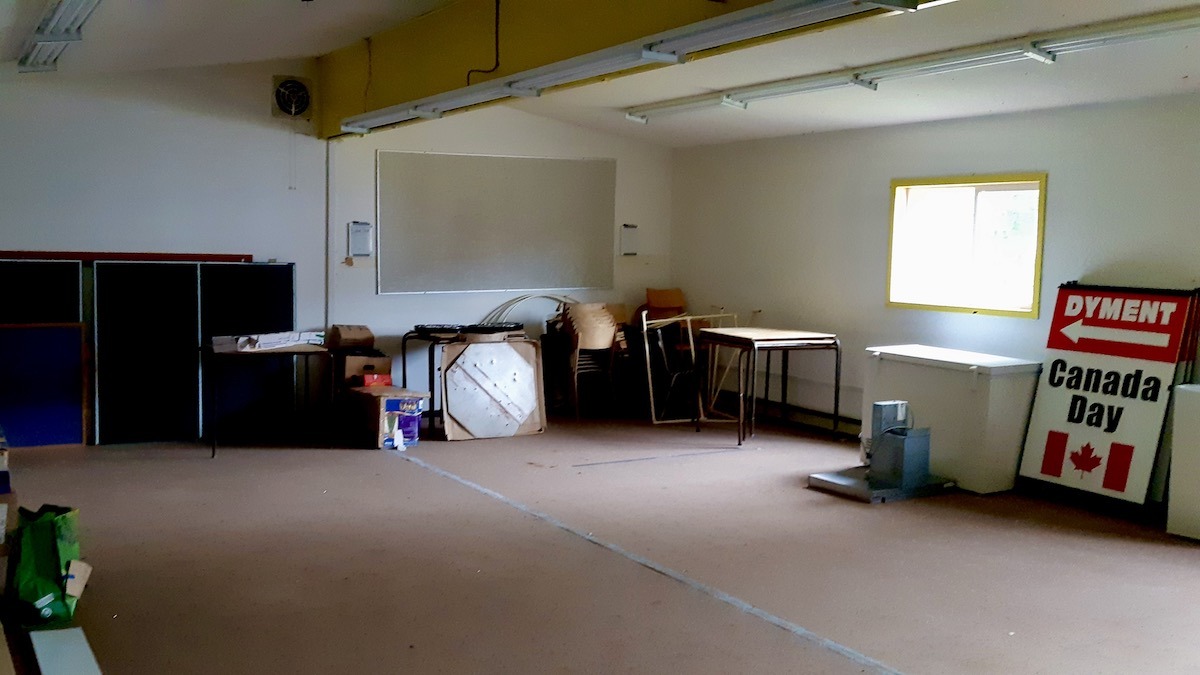
I. The Old Games Building: A Salvageable Asset, Consigned to Neglect
The “Old Games Building” represents another critical, yet woefully neglected, physical asset within the community portfolio. Since the completion of the new addition to the main recreation hall in 2022-2023, this former community hub has been abandoned to function primarily as a disorganized storage area, filled with accumulated junk and decaying remnants of its past. While structurally salvageable, its current state is a profound testament to organizational inertia and a stark illustration of the township’s pervasive inability to strategically utilize its properties for community benefit.
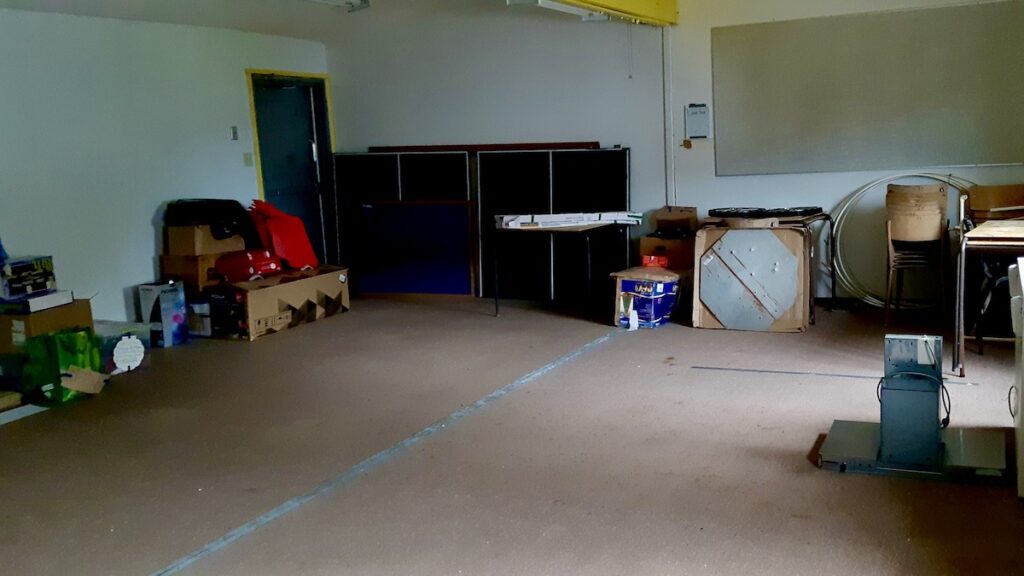
A. Current State: A Building Drowning in Discarded Potential
The Old Games Building’s present condition reflects a severe lack of stewardship and strategic vision.
- Deteriorated Appearance and Misuse: The space is visibly cluttered, serving as an indiscriminate repository for old tables, chairs, unused equipment, and various discarded items. This chaotic disarray not only renders the building unusable for any productive purpose but also creates an uninviting and potentially unsafe environment. The presence of miscellaneous supplies and old, dusty shelves reinforces its current role as a forgotten storeroom rather than a vibrant community resource.
- Decaying Cultural Remnants: A significant portion of the building is occupied by what appears to be a rudimentary library, filled with numerous old books. However, these books were largely salvaged from a past flood, leaving many in poor condition, water-damaged, and ultimately not worth saving for their original purpose.While a few might hold conceptual or artistic value, the majority represent physical clutter with little practical use, though their deteriorated state could offer unconventional artistic potential (e.g., for art projects focused on resilience or transformation).
- Obsolete Functionality: Having been superseded by the newer addition to the main recreation hall, the building’s original function as a games or communal space has ceased entirely. Its current configuration, dominated by haphazard storage, offers no structured programming or opportunities for community engagement.
B. Profound Gaps: A Complete Disconnect from Modern Purpose
The Old Games Building embodies the community’s systemic operational failures, isolating it from any meaningful 21st-century application:
- Lack of Defined Purpose: There is a complete absence of a new vision or designated function for this space since its former role became redundant. It exists without a clear path forward, indicating a failure in strategic asset management and foresight.
- Zero Structured Programming: Despite its potential, the building is not used for any form of structured programming. This reflects the broader community issue of zero volunteer mobilization and a catastrophic lack of strategic thinking at the board level, which prevents any attempt to plan, promote, or manage activities.
- Digital Isolation: Like other LSB facilities, this building suffers from a total absence of internet or any modern technological capabilities. This fundamental deficiency means any potential future use, from a digital media lab to an online learning center, is immediately unfeasible, further cementing its pre-digital abyss status and hindering any external communication or engagement.
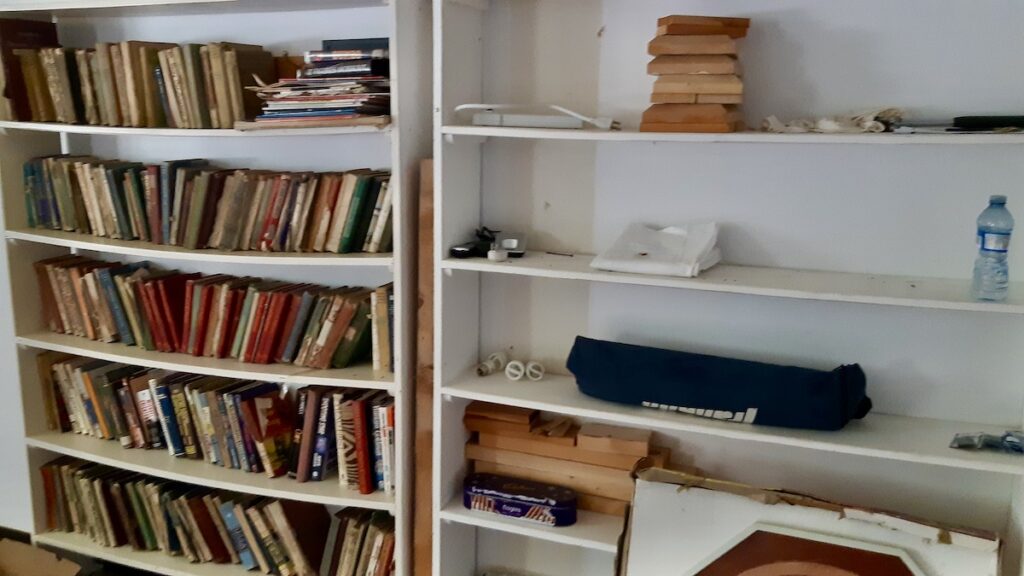
C. Squandered Potential: Apathy Overcomes Opportunity (Framework for Recreation in Canada)
The Old Games Building, despite its current dereliction, holds considerable, yet utterly squandered, potential to align directly with the Framework for Recreation in Canada (2024 Update):
- Goal 1: Active Living:
- Potential: The expansive open floor space, once thoroughly cleared of its accumulated junk, offers vast potential for diverse active pursuits not ideally suited for the main hall. This could include a dedicated, multi-purpose fitness area, a dynamic youth drop-in zone with varied games beyond traditional options, or a specialized workshop space for physical crafts, movement arts, or even small-scale performance rehearsals.
- Reality: Its current state as a chaotic and cluttered storage facility actively obstructs and prevents any form of active living or artistic expression, rendering this critical goal for community health and vitality completely unaddressed and systematically ignored.
- Goal 2: Inclusion and Access:
- Potential: Reimagined, this building possesses the inherent flexibility to become a truly specialized and accessible space for targeted programming designed to break down barriers. This could manifest as an adapted arts studio for individuals with diverse abilities, a quiet reading room for focused learning (utilizing the salvaged books in a curated way), a dedicated sensory space, or a specialized cultural meeting point, catering precisely to specific, often underserved, community needs.
- Reality: Its abandonment and continued misuse mean its inherent accessibility is entirely moot, and its profound potential to foster tailored inclusion, cultural participation, and equitable access to community resources is entirely neglected and consciously bypassed.
- Goal 3: Connecting People with Nature:
- Potential: Despite being indoors, this building could serve as a vital “nature classroom,” a central base for outdoor learning programs, an indoor seed library, or a dedicated space to host presentations and workshops on local ecology, environmental stewardship, or Indigenous land-based knowledge (contingent on establishing digital capabilities). The abundance of flood-damaged books, though unusable for traditional reading, could even inspire unique eco-art projects, bridging environmental awareness with creative expression.
- Reality: Its current disuse, coupled with the complete absence of any digital or educational infrastructure, ensures it contributes absolutely nothing to fostering a connection with the local natural environment or enriching cultural understanding of place.
- Goal 4: Supportive Environments:
- Potential: Once meticulously cleaned, purposefully organized, and thoughtfully activated, this building could transform into a unique and profoundly supportive environment. It could offer specialized programming, quiet spaces for study, reflection, or counseling, or serve as a dedicated, welcoming area for specific interest groups, fostering deep social connections, creative collaboration, and a sense of belonging that extends beyond mere recreation.
- Reality: As a neglected storage area overflowing with disused items, it is the absolute antithesis of a supportive environment, actively failing to build any positive physical or social connections for community members, or to nurture any form of cultural or artistic exchange.
- Goal 5: Recreation Capacity:
- Potential: Clearing and strategically repurposing this building would significantly and immediately increase the community’s overall recreational and cultural programming capacity. It would enable crucial diversification of offerings, providing a valuable, distinct venue for new initiatives beyond the main hall’s scope. Its salvageable nature makes it an eminently investable asset for new programming, cultural grants, and partnerships, demonstrating a forward-looking approach.
- Reality: The continued, neglect and misuse of this building directly undermine any efforts to build recreation or cultural capacity, representing a glaring, wasted opportunity to expand the community’s recreational, artistic, and social infrastructure. This demonstrates a profound inability to realize economic return on an existing asset.
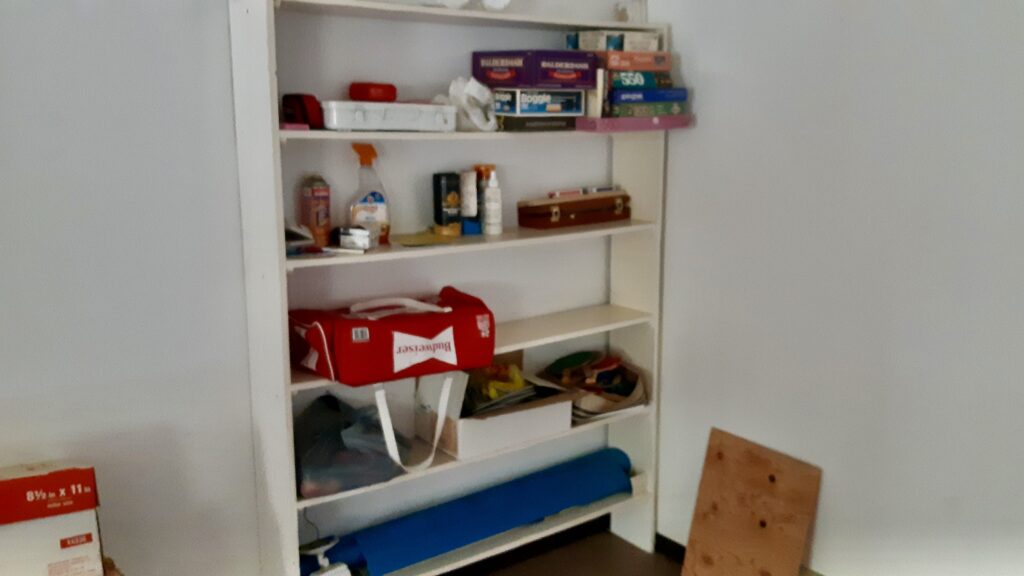
D. Conclusion: A Missed Opportunity for Revitalization and Return on Investment
The “Old Games Building,” a physically salvageable asset, currently stands as a stark symbol of neglect and organizational inertia. Its conversion into a de facto junk storage facility, coupled with the community’s systemic failures in digital integration, strategic planning, and volunteer mobilization, means its significant potential for diverse community programming remains entirely unrealized. Without a radical shift in vision and a commitment to action, this building will continue to represent a failure to provide any redeemable value or economic return on investment to the community, despite its inherent capacity for revitalization.

